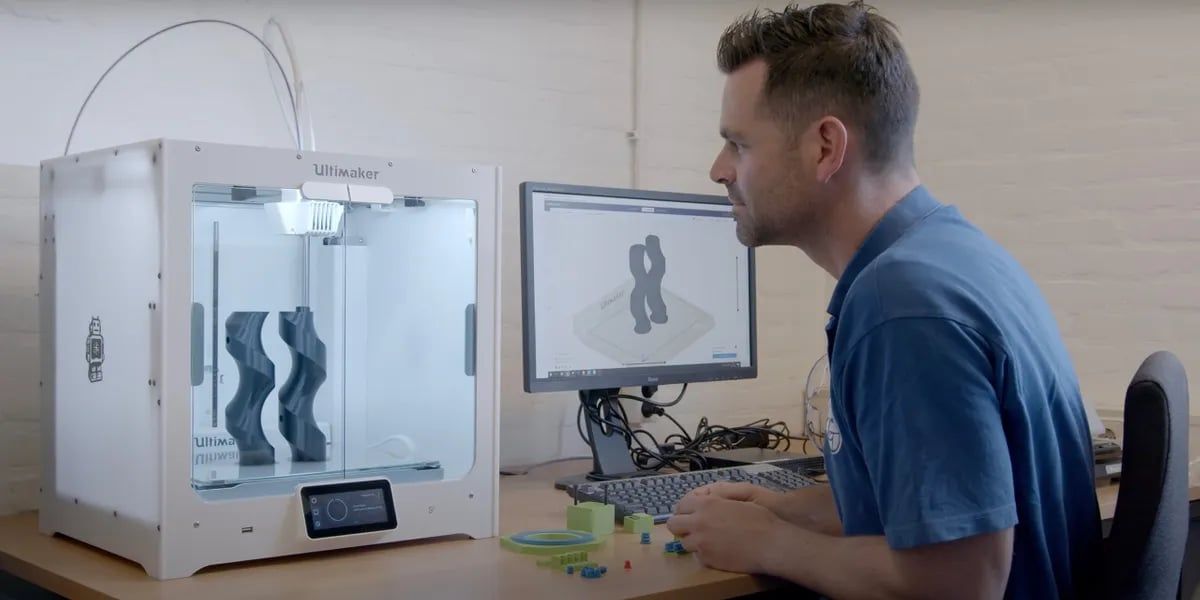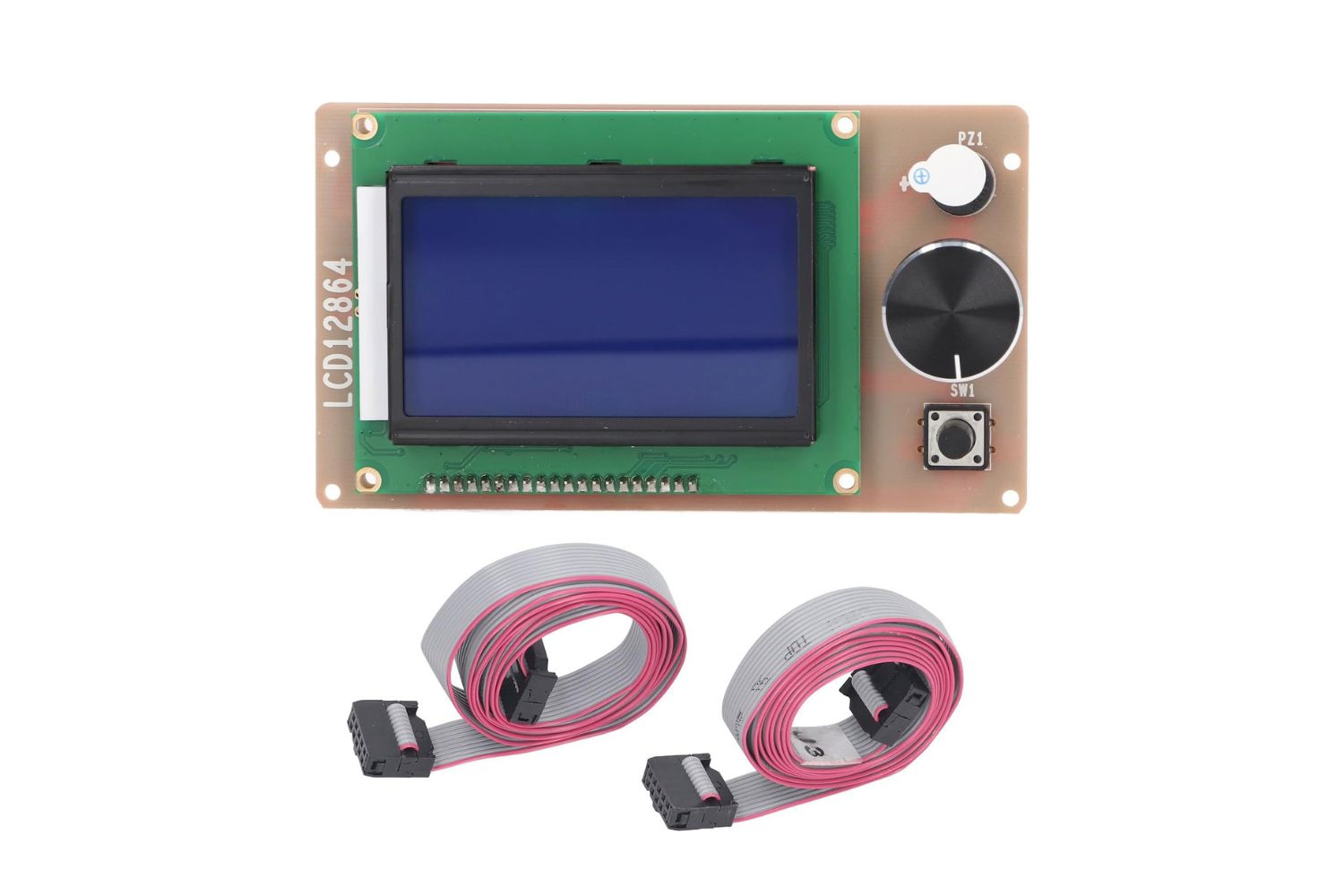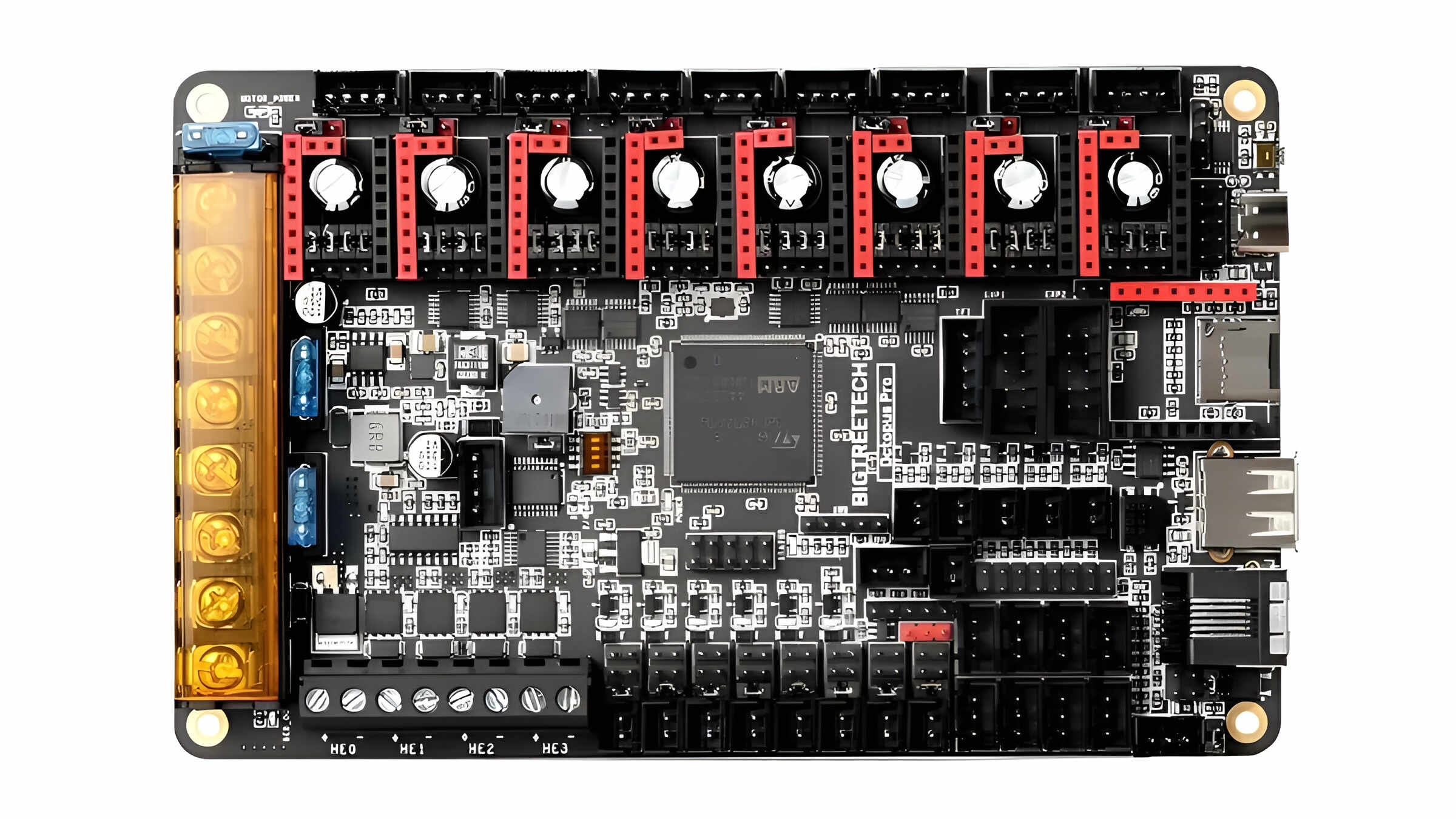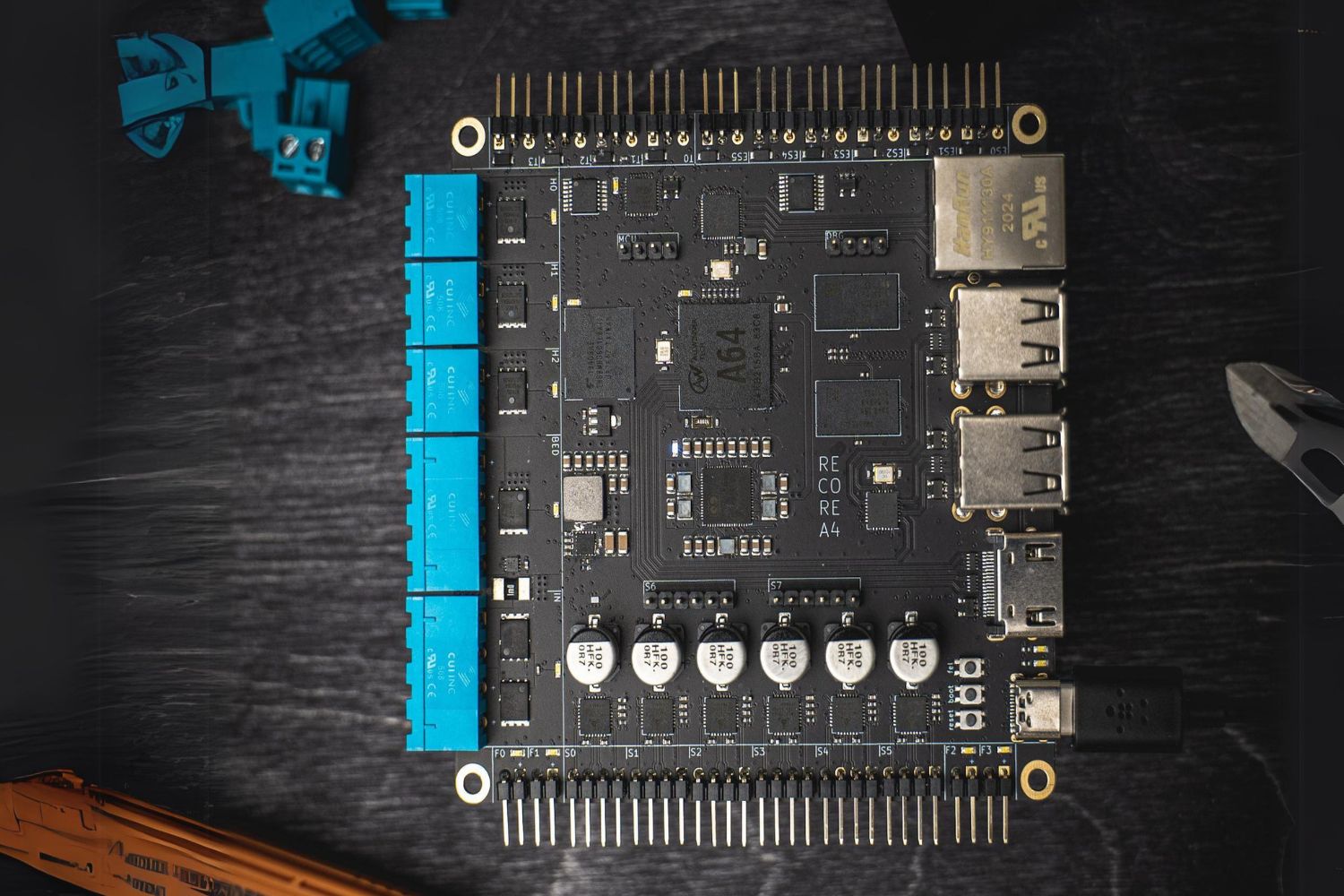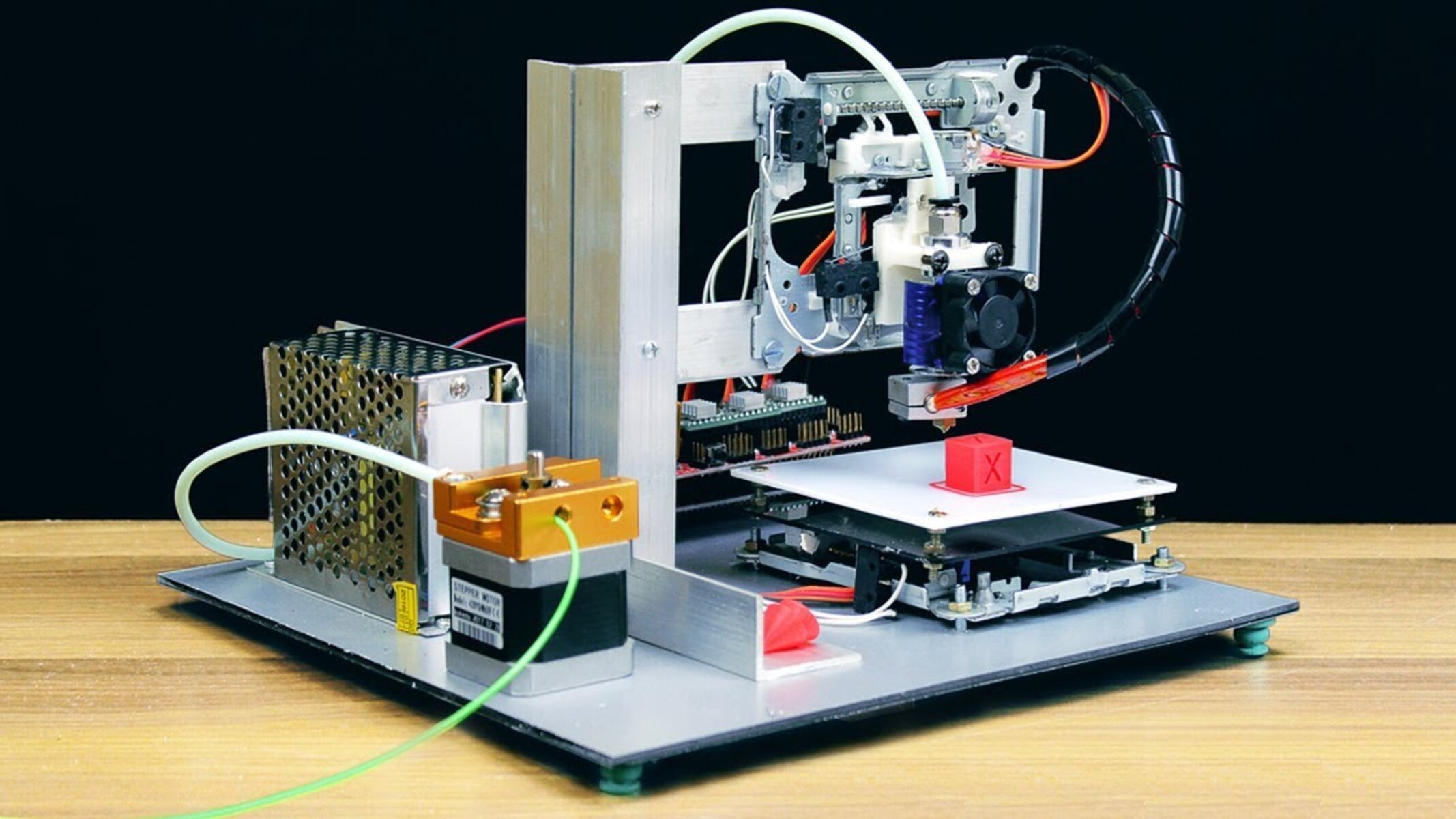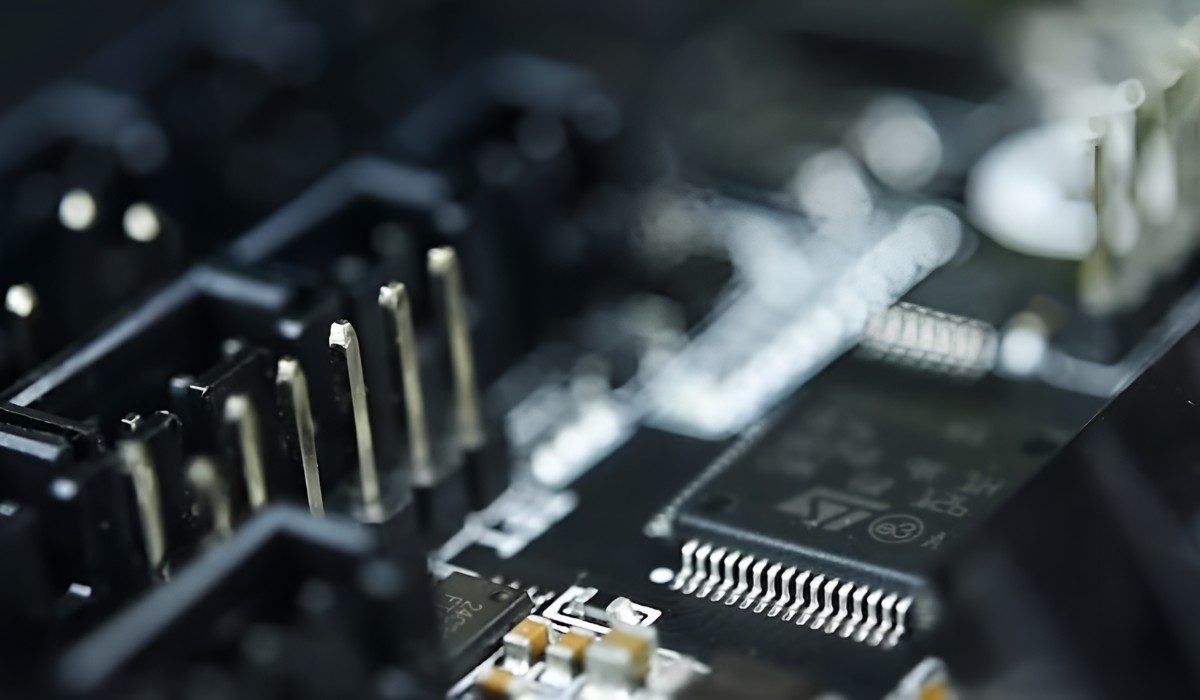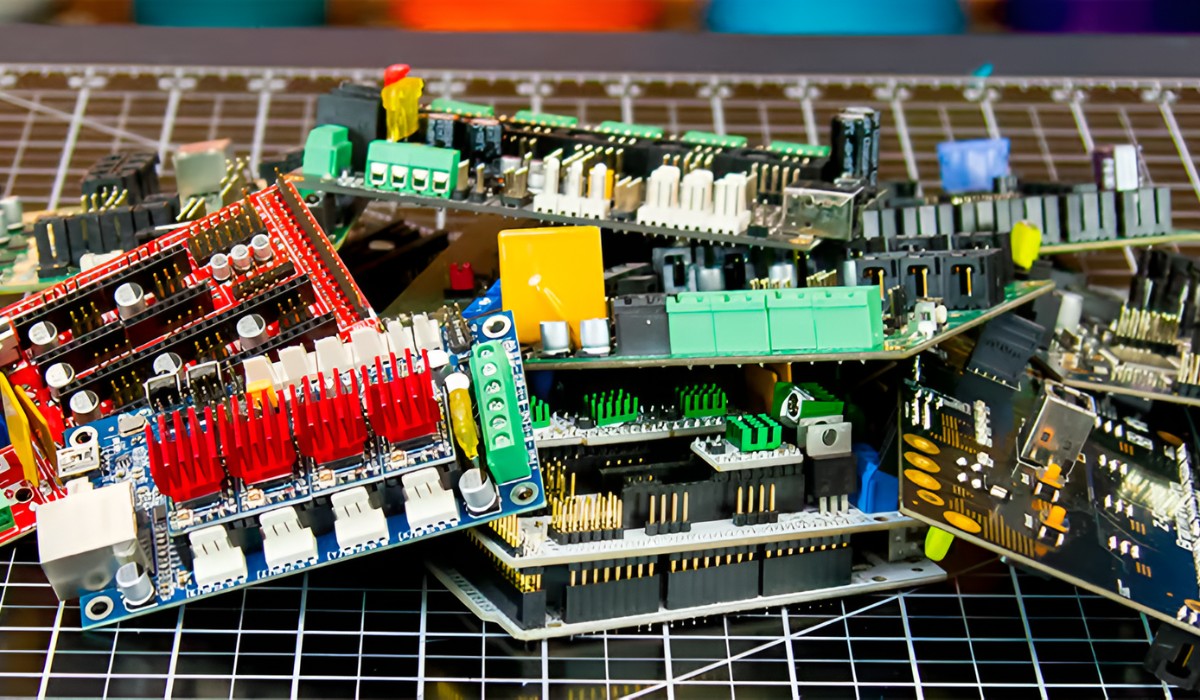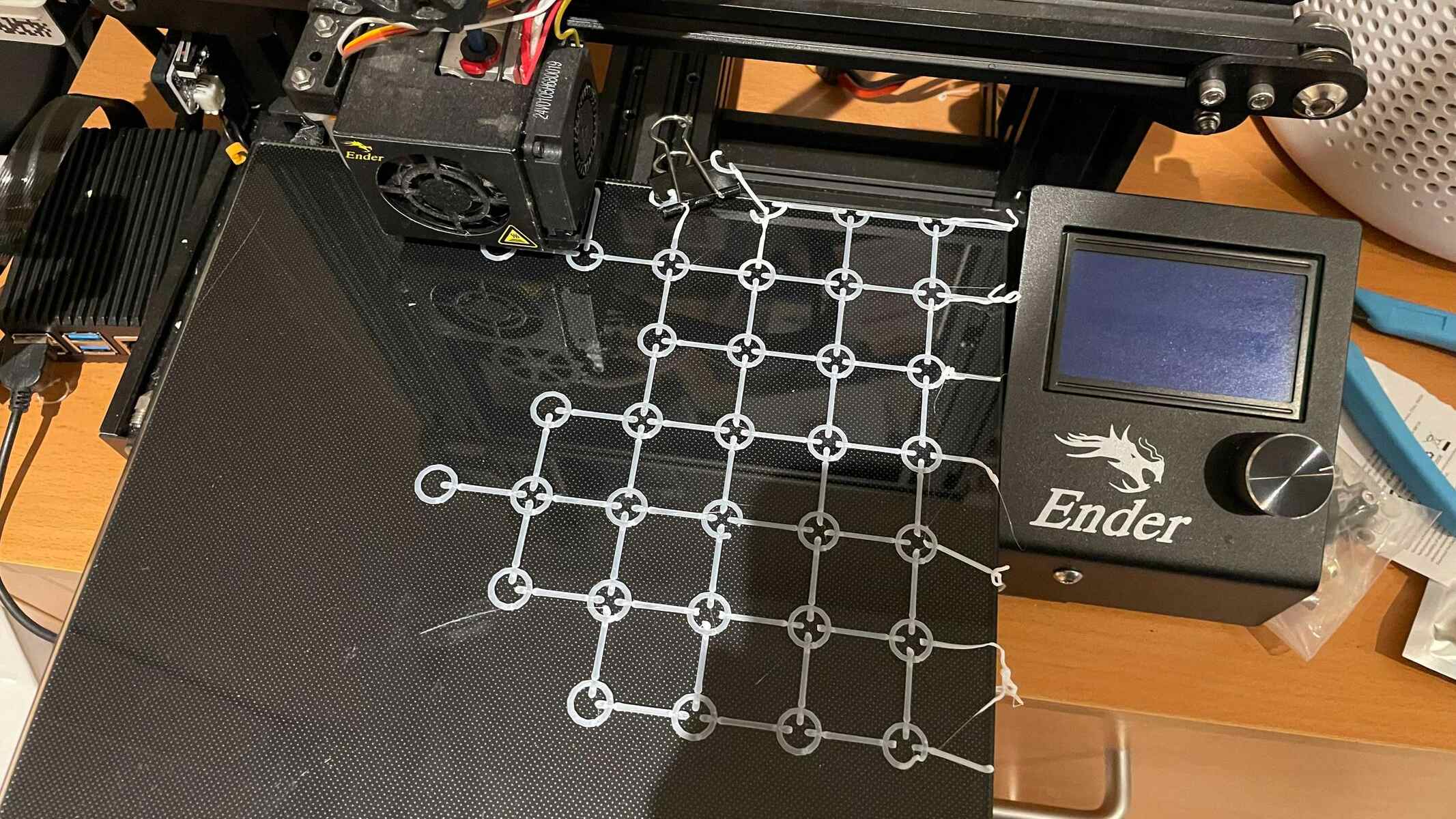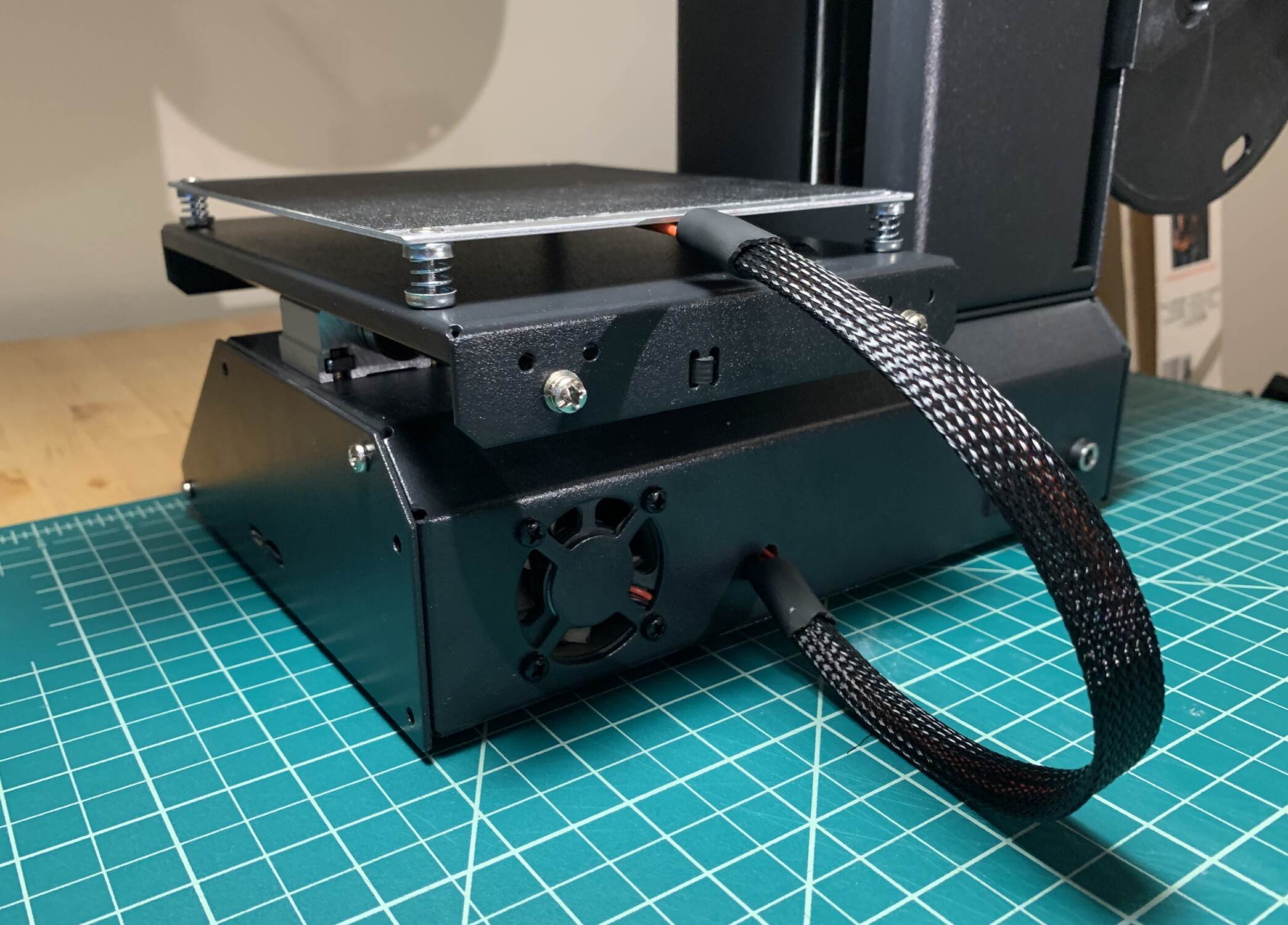Introduction
Welcome to the world of 3D printing! Whether you’re a hobbyist, a professional designer, or someone looking to unleash your creativity, having the right drivers for your 3D printer is essential. These drivers act as the communication bridge between your computer and the printer, ensuring that your designs come to life with precision and accuracy.
Understanding how to obtain and install the correct drivers for your 3D printer can sometimes be a daunting task. With multiple methods available, it’s important to familiarize yourself with the options and choose the method that best suits your needs.
In this article, we will explore different methods to obtain drivers for your 3D printer, including accessing the manufacturer’s website, utilizing open-source software repositories, considering third-party websites, and using driver software CDs or USBs. We will also guide you through the installation process on popular operating systems such as Windows, Mac, and Linux.
Additionally, we’ll address common issues that may arise during the driver installation process and provide troubleshooting tips to help you overcome any obstacles you may encounter.
By the end of this article, you’ll have a comprehensive understanding of how to obtain, install, and troubleshoot drivers for your 3D printer. So, let’s dive in and ensure that you have all the necessary tools to bring your imaginations to life!
Understanding drivers for 3D printers
Before we delve into the various methods of obtaining drivers for your 3D printer, it’s important to understand what drivers are and why they are crucial for your printing experience.
In simple terms, drivers are software components that enable communication between your computer and your 3D printer. They act as translators, converting the commands generated by your computer’s operating system into a language that the printer can understand and execute. Without the appropriate drivers, your computer won’t be able to send the necessary instructions to your 3D printer, resulting in a lack of functionality.
Each 3D printer model typically has its own unique set of drivers. These drivers are designed specifically for that particular printer and its corresponding firmware. While some printers may have generic “plug-and-play” drivers that work with standard printing commands, others require specific drivers with advanced functionalities to fully utilize the capabilities of the printer.
It’s worth noting that different operating systems may require different drivers. For example, a driver that functions seamlessly on Windows may not work on a Mac or Linux system. Therefore, it’s essential to choose the correct driver that corresponds to your operating system.
Drivers not only facilitate communication between your computer and printer but also provide additional functionality. They allow you to control various settings of the printer, such as print quality, speed, nozzle temperature, and more. Some drivers even offer advanced features like multi-material printing, color mixing, and support for specific file formats.
As technology advances, manufacturers often release updated versions of their printer drivers. These updates may include bug fixes, performance enhancements, or compatibility improvements. It’s essential to stay up to date with the latest driver versions to ensure optimal performance and compatibility with your 3D printer.
Now that we have a basic understanding of what drivers are and why they are crucial, let’s explore the different methods of obtaining drivers for your 3D printer.
Methods to obtain drivers for 3D printers
When it comes to obtaining drivers for your 3D printer, you have several options to choose from. Let’s explore the most common methods:
- Manufacturer’s Website: The first and most reliable method is to visit the official website of your 3D printer’s manufacturer. Most manufacturers provide a dedicated support section on their website, where you can find the latest drivers and firmware updates for your specific printer model. Simply navigate to the support or downloads section, locate your printer model, and download the compatible driver for your operating system.
- Open Source Software Repositories: If you’re using an open-source or community-supported 3D printer, you may find the necessary drivers within software repositories such as GitHub. Many developers contribute their printer drivers to these repositories, making them easily accessible for users. Look for repositories related to your specific printer model or the software you’re using for 3D printing, and download the appropriate driver files.
- Third-party Websites: In some cases, you may find third-party websites that offer a collection of printer drivers for various makes and models. These websites act as centralized platforms, aggregating printer drivers from different manufacturers. While using third-party websites can be convenient, exercise caution and ensure that you download drivers only from trusted sources to avoid malware or compatibility issues.
- Driver Software CDs or USBs: Many 3D printers come with driver software CDs or USB drives when purchased. These physical media contain the necessary drivers and software for your printer. Follow the instructions provided with the CD or USB to install the drivers onto your computer. However, it’s always a good idea to check the manufacturer’s website for any updated drivers, as the ones included with the purchase may be outdated.
Each of these methods has its advantages and disadvantages, so consider your specific needs and preferences when choosing the best option for obtaining drivers for your 3D printer.
Now that we know how to obtain the drivers, let’s move on to the process of installing them on different operating systems.
Manufacturer’s Website
The manufacturer’s website is often the most reliable and recommended source for obtaining drivers for your 3D printer. Manufacturers maintain official websites where they provide support and resources for their products, including the latest drivers and firmware updates.
Here’s a step-by-step guide on how to obtain drivers from the manufacturer’s website:
- Visit the official website of your 3D printer’s manufacturer.
- Look for a support or downloads section on the website. It may be located under a separate tab or in the footer of the homepage.
- Navigate to the section specifically dedicated to your printer model, or search for your printer model using the provided search bar.
- Once you’ve found your printer model, look for the available drivers section. Manufacturers often provide separate driver downloads for different operating systems such as Windows, Mac, and Linux.
- Select the driver that corresponds to your operating system and download it to your computer. Make sure to note the version number and any specific instructions provided by the manufacturer.
- After downloading the driver, locate the downloaded file on your computer and run the installation wizard. Follow the on-screen instructions to complete the installation process.
- Once the driver is installed, connect your 3D printer to your computer via USB or any other supported connection method.
- Restart your computer if prompted to do so.
- Your computer should now recognize and be able to communicate with your 3D printer using the installed driver.
It’s important to periodically check the manufacturer’s website for any driver updates. Manufacturers often release updates to improve performance, add new features, or address compatibility issues. Staying up to date with the latest drivers will ensure optimal functionality and compatibility with your 3D printer.
Using drivers downloaded directly from the manufacturer’s website also reduces the risk of compatibility issues or malware, as the drivers are certified and verified by the manufacturer. It’s the most reliable source to obtain the correct and official drivers for your specific printer model.
Now that we understand how to obtain drivers from the manufacturer’s website, let’s explore other methods of obtaining drivers for your 3D printer.
Open Source Software Repositories
If you’re using an open-source or community-supported 3D printer, you may find the necessary drivers within software repositories such as GitHub. These repositories offer a wide range of community-developed software, including 3D printer drivers and firmware.
Here’s a step-by-step guide on how to obtain drivers from open-source software repositories:
- Start by searching for the appropriate software repository for your 3D printer model. Popular repositories like GitHub often have a dedicated section for 3D printing.
- Within the repository, look for the driver section or search for drivers specific to your printer model.
- Review the available driver options and select the one that best suits your needs, considering factors such as compatibility, features, and community feedback.
- Download the driver files from the repository to your computer.
- Once downloaded, locate the driver files on your computer and follow any provided installation instructions.
- Connect your 3D printer to your computer using the appropriate cable or connection method.
- Restart your computer if prompted to do so.
- Once the driver is installed, your computer should recognize your 3D printer and establish communication.
Using open-source software repositories for obtaining drivers provides the advantage of accessing community-developed drivers and firmware. The open-source nature encourages collaboration and innovation, often leading to unique features and optimizations for different 3D printer models.
However, it’s essential to exercise caution and ensure that the drivers you download from repositories are from reputable sources and have been reviewed by other users. Checking the reputation and feedback of the driver within the community can help you determine its reliability and compatibility with your specific printer model.
Now that we’ve explored obtaining drivers from open-source software repositories, let’s move on to other methods of acquiring drivers for your 3D printer.
Third-party Websites
In addition to the manufacturer’s website and open-source software repositories, there are also third-party websites that offer a collection of drivers for various 3D printer models. These websites act as centralized platforms, aggregating drivers from different manufacturers, making them easily accessible for users.
Here’s a step-by-step guide on how to obtain drivers from third-party websites:
- Start by searching for reputable third-party websites that specialize in providing drivers for 3D printers. Look for websites that have positive reviews and a good reputation within the 3D printing community.
- Once you’ve found a reliable third-party website, navigate to their 3D printer driver section.
- Use the search bar or browse through the available drivers to find the one that matches your printer model and operating system.
- Ensure that the driver you’re downloading is from a trusted source and has been verified by the website.
- Download the driver files to your computer.
- After the download is complete, locate the driver files and run the installation wizard.
- Follow the on-screen instructions to complete the installation process.
- Connect your 3D printer to your computer using the appropriate cable or connection method.
- Restart your computer if prompted to do so.
- After the installation, your computer should recognize your 3D printer and establish communication.
While using third-party websites can be convenient, it’s important to exercise caution and ensure that the website you choose is reputable and trustworthy. Stick to websites that have positive reviews and a history of providing reliable drivers. Be wary of downloading files from unknown or suspicious sources as they may contain malware or incompatible drivers.
It’s also a good practice to cross-reference the drivers from third-party websites with the official manufacturer’s website to ensure that you’re obtaining the most up-to-date and compatible version for your printer model.
Now that we understand the process of obtaining drivers from third-party websites, let’s explore another method of acquiring drivers for your 3D printer.
Driver Software CDs or USBs
In some cases, when you purchase a new 3D printer, it may come with driver software CDs or USBs. These physical media contain the necessary drivers and software for your printer. Using the driver software provided by the manufacturer ensures that you have the correct and official drivers specifically tailored for your printer model.
Here’s a step-by-step guide on how to obtain drivers using driver software CDs or USBs:
- Check the packaging of your 3D printer to see if it includes a driver software CD or USB. Typically, it’s mentioned on the box or in the included documentation.
- Insert the driver software CD into your computer’s CD/DVD drive or connect the driver software USB to a USB port.
- Follow the on-screen prompts to run the installer from the CD or USB.
- Read and accept the terms and conditions if prompted.
- Specify the location where you want to install the driver files if given the option.
- Wait for the installation process to complete. This may take a few minutes.
- Connect your 3D printer to your computer using the appropriate cable or connection method.
- If prompted, restart your computer to finalize the driver installation.
- After the installation and restart, your computer should recognize your 3D printer and establish communication.
While using driver software CDs or USBs is convenient, it’s always a good idea to check the manufacturer’s website for any updated drivers. The drivers included with the purchase may not be the most up-to-date versions, as manufacturers often release updates to fix bugs, improve performance, or provide new features. The website is your best source for obtaining the latest drivers.
However, if you’re unable to access the manufacturer’s website or need drivers immediately, using the driver software CDs or USBs is a viable option to get started with your 3D printer.
Now that we’ve explored the methods of obtaining drivers for your 3D printer let’s move on to the next step – installing the drivers on different operating systems.
Installing drivers for 3D printers
Once you have obtained the necessary drivers for your 3D printer, the next step is to install them on your computer. The installation process may vary depending on the operating system you are using.
Here’s a general guide on how to install drivers for your 3D printer on different operating systems:
1. Windows OS:
- Locate the driver file you downloaded or insert the driver software CD/USB into your computer.
- Double-click on the driver file or run the installer from the CD/USB. The installation wizard should launch.
- Follow the on-screen instructions provided by the installer. This may involve accepting terms and conditions, selecting the installation location, and choosing additional features or settings.
- Once the installation is complete, connect your 3D printer to your computer using the appropriate cable or connection method.
- Your computer should now recognize the printer and automatically configure it using the installed drivers.
2. Mac OS:
- Locate the driver file you downloaded or insert the driver software CD/USB into your computer.
- Double-click on the driver file or run the installer from the CD/USB. The installation process should start.
- Follow the on-screen instructions provided by the installer. This may involve accepting terms and conditions, specifying the installation location, and entering your administrator credentials.
- Once the installation is complete, connect your 3D printer to your Mac using the appropriate cable or connection method.
- Your Mac should recognize the printer and automatically configure it using the installed drivers.
3. Linux OS:
- Ensure that you have the necessary permissions to install drivers on your Linux system. This often requires running the installation process with root or sudo privileges.
- Locate the driver file you downloaded or insert the driver software CD/USB into your computer.
- Open a terminal and navigate to the location of the driver file or the mounted CD/USB drive.
- Run the installation command provided by the manufacturer or the documentation accompanying the driver.
- Follow any additional on-screen instructions or prompts specific to the driver installer.
- Once the installation is complete, connect your 3D printer to your computer using the appropriate cable or connection method.
- Your Linux system should detect the printer and configure it using the installed drivers.
It’s important to note that the installation process may have slight variations depending on the specific driver and printer model. Always refer to the documentation provided with the driver for any specific instructions or troubleshooting steps.
Now that you have successfully installed the drivers for your 3D printer on your operating system, you are ready to start printing your designs.
Windows OS
If you’re using a Windows operating system, installing drivers for your 3D printer involves a series of straightforward steps.
- Begin by locating the driver file you downloaded, or insert the driver software CD/USB into your computer.
- Once the driver file is accessible, double-click on it or run the installer from the CD/USB. This action will launch the installation wizard.
- Follow the on-screen instructions provided by the installer. These may include accepting the terms and conditions, selecting the installation location, and choosing additional features or settings.
- After the installation is complete, connect your 3D printer to your computer using the appropriate cable or connection method.
- Your Windows operating system should automatically recognize the printer and configure it using the installed drivers.
It’s advisable to restart your computer after installing the 3D printer drivers to ensure that any necessary system updates are applied and the drivers are fully integrated with the operating system.
If your computer doesn’t automatically detect the printer, you may need to manually add the printer through the Windows Control Panel. Follow these steps:
- Open the Control Panel on your Windows computer.
- Navigate to the “Devices and Printers” or “Printers and Scanners” section.
- Click on the “Add a printer” option.
- Select the appropriate 3D printer from the list of available devices or choose the option to manually add a printer using the printer’s IP address.
- Follow any additional prompts or instructions provided to complete the printer installation.
By now, your Windows operating system should be ready to communicate with your 3D printer and you can start printing your designs with ease.
Mac OS
If you’re running a Mac OS, installing drivers for your 3D printer is a simple process that can be completed by following a few steps:
- Begin by locating the driver file you downloaded or insert the driver software CD/USB into your Mac.
- Double-click on the driver file or run the installer from the CD/USB. The installation process should initiate.
- Follow the on-screen instructions provided by the installer. This may include accepting the terms and conditions, specifying the installation location, and entering your administrator credentials.
- After the installation is complete, connect your 3D printer to your Mac using the appropriate cable or connection method.
- Your Mac operating system should automatically detect the printer and configure it using the installed drivers.
If the printer is not automatically recognized by your Mac, you can manually add the printer through the System Preferences:
- Open the Apple menu and select “System Preferences.”
- Choose the “Printers & Scanners” or “Print & Fax” option.
- Click on the “+” button to add a new printer.
- Select the appropriate 3D printer from the list of available devices or choose the option to add a printer using the printer’s IP address.
- Follow any additional prompts or instructions provided to complete the printer installation.
After the installation process is complete, your Mac is ready to communicate with your 3D printer. You can now start printing your designs and bringing your ideas to life.
Linux OS
If you’re using a Linux operating system, installing drivers for your 3D printer requires some additional steps compared to Windows or Mac OS.
- Ensure that you have the necessary permissions to install drivers on your Linux system. This often requires running the installation process with root or sudo privileges.
- Locate the driver file you downloaded or insert the driver software CD/USB into your Linux computer.
- Open a terminal and navigate to the location of the driver file or the mounted CD/USB drive.
- Run the installation command provided by the manufacturer or the documentation accompanying the driver. This command may vary depending on the specific driver and printer model.
- Follow any additional on-screen instructions or prompts specific to the driver installer.
- After the installation is complete, connect your 3D printer to your computer using the appropriate cable or connection method.
- Your Linux operating system should detect the printer and automatically configure it using the installed drivers.
It’s important to note that the installation process on Linux may vary depending on the distribution you’re using or the specific driver package you’re installing. Refer to the documentation provided with the driver for any specific instructions or troubleshooting steps.
In case your Linux system doesn’t automatically detect the printer, you may need to manually configure it using the CUPS (Common Unix Printing System) web interface.
- Open your web browser and enter “http://localhost:631” in the address bar.
- Select the “Administration” tab and enter your username and password, if prompted.
- Click on the “Add Printer” option and follow the on-screen instructions to add your 3D printer.
- Provide the necessary information, such as the printer’s make and model, and the connection type.
- Save the settings and exit the CUPS web interface.
After completing these steps, your Linux operating system should be ready to communicate with your 3D printer. You can now start printing your designs and unleash your creativity.
Troubleshooting Driver Installation Issues
While installing drivers for your 3D printer, you may encounter some common issues. Here are some troubleshooting tips to help you resolve driver installation problems:
- Unsupported Operating System: Ensure that you are downloading and installing the correct driver for your operating system. Using drivers designed for a different operating system can lead to compatibility issues.
- Administrator Privileges: On some systems, you may need administrative or root permissions to install drivers. Make sure you have the necessary privileges before starting the installation process.
- Antivirus or Firewall Interference: Sometimes, security software or firewall settings can prevent the installation of drivers. Temporarily disable your antivirus or firewall software during the installation process. Remember to re-enable them once the installation is complete.
- Incomplete Download: If you encounter errors during installation, the driver file may be corrupt or incomplete. Redownload the driver from a reliable source and verify the integrity of the downloaded file with a checksum if available.
- Outdated Firmware: Ensure that your 3D printer’s firmware is up to date. Outdated firmware can cause compatibility issues with the installed drivers. Visit the manufacturer’s website for any firmware updates and follow the instructions provided to update the firmware.
- Conflicting Drivers: If you have previously installed drivers for a similar or different printer, they may conflict with the new drivers. Uninstall any conflicting drivers before proceeding with the installation of the new ones.
- Connection Issues: Ensure that your 3D printer is properly connected to your computer. Check the cables, ports, and power supply to ensure a stable connection. Try using a different USB cable or port to troubleshoot connection-related problems.
- Restart and Retry: Sometimes, simply restarting your computer and retrying the installation process can resolve issues. Restarting your computer helps refresh the system and clear any temporary issues that may be affecting the installation.
- Seek Manufacturer Support: If you are unable to resolve the issue on your own, reach out to the manufacturer’s technical support for further assistance. They can provide specific troubleshooting steps or direct you to any known solutions.
By following these troubleshooting tips, you can overcome most driver installation issues and ensure that your 3D printer is correctly installed and ready for use.
Frequently Asked Questions (FAQs)
Here are some commonly asked questions about obtaining and installing drivers for 3D printers:
1. Where can I find the drivers for my 3D printer?
The best place to find drivers for your 3D printer is the official website of the printer’s manufacturer. They usually have a dedicated support or downloads section where you can find the latest drivers specific to your printer model.
2. Can I use third-party drivers for my 3D printer?
While it is possible to use third-party drivers, it is generally recommended to use drivers provided by the manufacturer. Official drivers ensure compatibility and optimal performance with your specific printer model.
3. How often should I update my 3D printer drivers?
It is a good practice to periodically check for driver updates on the manufacturer’s website. Updated drivers may include bug fixes, performance enhancements, and new features. Updating drivers ensures the best performance and compatibility with your 3D printer.
4. Can I install multiple drivers for different 3D printers on the same computer?
Yes, you can install drivers for multiple 3D printers on the same computer. However, ensure that the drivers and printers are compatible, and there are no conflicts between them.
5. What should I do if my operating system does not recognize the 3D printer?
If your operating system does not automatically recognize the 3D printer after installing the drivers, try manually adding the printer through the system settings or control panel. Refer to the manufacturer’s documentation or website for specific instructions on how to add the printer on your operating system.
6. Are there alternative drivers available for open-source 3D printers?
Yes, many open-source 3D printers have alternative drivers developed by community members. These drivers can offer additional features or optimizations specific to certain printer models. Check open-source software repositories and forums dedicated to 3D printing for alternative drivers.
7. Can I use generic drivers for 3D printers?
Generic drivers may work for basic functionalities of some 3D printers, but it is recommended to use drivers specifically designed for your printer model. Manufacturer-provided drivers offer better compatibility, advanced features, and optimal performance.
8. Should I uninstall the old drivers before installing new ones?
If you are upgrading or changing your 3D printer, it is advisable to uninstall the old drivers before installing the new ones. This helps avoid any conflicts between the drivers and ensures a clean installation.
9. Can I use 3D printer drivers on different operating systems?
No, 3D printer drivers are typically designed for specific operating systems. Drivers meant for Windows may not work on Mac or Linux, and vice versa. Always ensure that you download and install the correct drivers for your particular operating system.
10. What should I do if I encounter driver installation errors or issues?
If you encounter driver installation errors or issues, try restarting your computer and retrying the installation process. Make sure you have the necessary permissions and check for any conflicting drivers. If the issue persists, consult the manufacturer’s support documentation or contact their technical support for further assistance.
By addressing these frequently asked questions, we hope to provide clarification and guidance on obtaining and installing drivers for your 3D printer.
Conclusion
In conclusion, obtaining and installing drivers for your 3D printer is a crucial step to ensure seamless communication between your computer and the printer. By having the correct drivers, you can unleash the full potential of your printer, enabling you to bring your designs to life with accuracy and precision.
We explored several methods for obtaining drivers, including accessing the manufacturer’s website for official drivers, utilizing open-source software repositories for community-developed drivers, considering trusted third-party websites, and using driver software included with the printer. Each method has its own advantages and considerations, so it’s important to choose the one that best fits your needs.
We also provided step-by-step instructions for installing drivers on popular operating systems like Windows, Mac, and Linux. It’s essential to follow the specific installation instructions provided by the manufacturer or the driver documentation to ensure a successful installation process.
Additionally, we discussed common issues that may arise during driver installation and provided troubleshooting tips to help resolve them. By addressing these issues, you can overcome challenges and ensure that your printer is properly configured for optimal performance.
Remember to periodically check for driver updates on the manufacturer’s website to take advantage of bug fixes, performance improvements, and new features. Staying up to date with the latest drivers will help keep your 3D printer running smoothly.
We hope this guide has provided valuable insights and guidance on obtaining and installing drivers for your 3D printer. Now that you have the necessary tools, go ahead and explore the world of 3D printing, bringing your innovative ideas to life.







